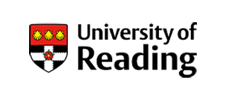
In January 2023, I had the pleasure of visiting the Walker Institute to undertake some interdisciplinary work. It was a great experience: I focused on using network simulations to model the spread of Onchocerciasis within communities, and I was able to interact with a range of interesting people!
I come from a mathematics background, switching to statistics at the end of my Bachelors. Now studying the integrated Masters, it is not always clear to me how to use the skills I’ve acquired in a meaningful way. I have completed some internships in the past and they were useful, including areas such as ESG in finance or diversity in consultancy. These areas can potentially help a lot of people, I often felt like ‘social justice for the 1%’. Rosalind gave me a few options of what I could do: I could modernise a website providing rain weather data to farmers in West Africa; I could look at different data sets, or I could analyse Onchocerciasis data to look for patterns or interesting hypotheses.
Onchocerciasis is a Neglected Tropical Disease common in West Africa and parts of the Americas. It causes blindness and a host of unpleasant side effects. The focus of my work was to understand how to predict where it will be endemic which is incredibly useful in being able to prepare for it and focus our preventative and treatment measures.
I initially chose the project because it fit with my data analysis skills. However, after realising that the data was from a wide array of sources, not the single table I was used to dealing with, I knew I didn’t have enough time to work on it. I also became less convinced that it was something I could add enough value to in the time available I met with Dr Cathie Wells and Dr Elena Saggioro and learned about the use of causality and other mathematical tools, and this surprised me. I always assumed data was the name of the game, but my interactions with the Walker Institute team made me wonder if there was more to be understood beyond data alone. Dr Celia Petty mentioned the importance of livelihood data, and of the importance of social dynamics. I have just completed a course on network analysis, and I realised I could use what I learned there to try and simulate the spread of disease in local communities.
I came in planning a big picture data analysis project, but after chatting with the team at the Walker Institute, and with some of the people at Sightsavers, I realised I could add more value by working on something more policy focused: a tool people could understand and experiment with and that they could rerun on their laptops. I made a small, simple model and a more generalisable one, not with data incorporated into it yet but with potential for that in the future. I also made it as usable as I could, because of what the people at Sightsavers asked during a meeting. One of the team asked me a very clear question (one I will have to paraphrase because I am forgetful): ‘how can we use this when you stop working on it?’ It’s an obvious question, but I hadn’t really considered it. I could spend those two weeks trying to get out the most interesting thing I could get out that was probably too sloppily written for anyone to use, or I could do something a bit smaller but that could actually be used.
In particular, I was very interested by this paper, which uses MCMC and Variograms and some really fun math.
What I could do was try to introduce a technique I didn’t see used so much, with code that was clean and understandable and able to be improved on an ongoing basis. That was the main focus of this project, although I wish I had more time with it to go further.
Outside of the work, I was also able to see some great parts of Reading. I took a walk in the forest area, ran with the Met runners and ate a bagel from the bagel man. I’m sure I haven’t seen it all, but what I did see was a lot of fun. I look forward to coming round again sometime in the future.

